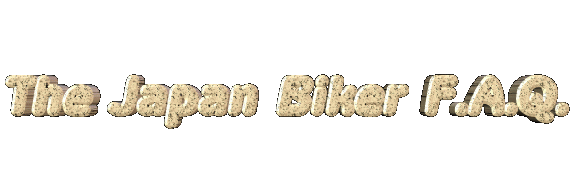


Many road signs that pose restrictions (one way, do not enter, etc.) will have small signs appended to them (white, with black lettering) limiting the restriction to certain times or types of vehicles.
The most popular is:
JITENSHA WO NOZOKU (自転車を除く) "bicycles excluded" meaning that the restriction doesn't apply to bicycles (not that anyone on a bicycle would ever pay attention to a "one way" sign anyway).
...WO NOZOKU (…を除く) means "exclusion" or "excluding".
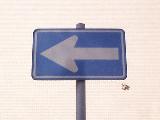 "one way"
"one way"
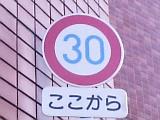 white circle, red ring, blue number inside shows speed limit (in km/h)
white circle, red ring, blue number inside shows speed limit (in km/h)
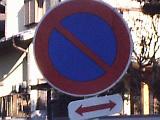 "no parking" -- lots of law-breakers here.
"no parking" -- lots of law-breakers here.
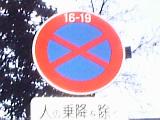 "no parking or stopping" -- even more law-breakers here.
"no parking or stopping" -- even more law-breakers here.
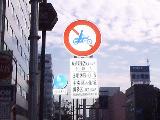 "no bikes over 250cc allowed" (during times specified). Note that this law is nearly never enforced, or enforced very selectively.
"no bikes over 250cc allowed" (during times specified). Note that this law is nearly never enforced, or enforced very selectively.
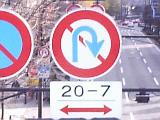 "no U turn", obviously
"no U turn", obviously
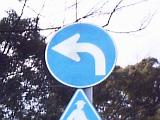 "left turn only" -- i.e. no right turn
"left turn only" -- i.e. no right turn
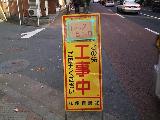 "Under Construction"
"Under Construction"
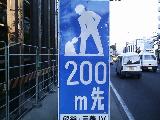 "Construction ahead" -- Here, 200m ahead
"Construction ahead" -- Here, 200m ahead
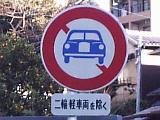 "No Cars may enter (but bikes OK)" --often in packed neighborhoods or small mountain roads
"No Cars may enter (but bikes OK)" --often in packed neighborhoods or small mountain roads
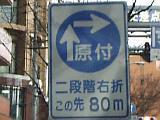 "50cc scooters must use the two-step right turn method for right turn*"
"50cc scooters must use the two-step right turn method for right turn*"
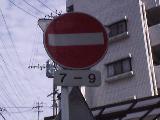 "Do Not Enter" -- On some signs, like in this picture, it only applies during the hours listed (often during rush hour, etc.)
"Do Not Enter" -- On some signs, like in this picture, it only applies during the hours listed (often during rush hour, etc.)
 blue or green signs with lettering -- route info, major highways, exit signs, etc.
blue or green signs with lettering -- route info, major highways, exit signs, etc.
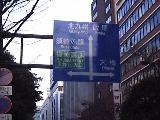 Large blue signs show place names and directions. Often they are 200m in front of an intersection, and are nearly the only signs with the places listed in the alphabet.
Large blue signs show place names and directions. Often they are 200m in front of an intersection, and are nearly the only signs with the places listed in the alphabet.
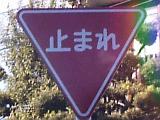 TOMARE (止まれ)--"Stop"
TOMARE (止まれ)--"Stop"
* the two-step right turn method is like the "Melbourne turn" or "hook turn" - when there are more than 2 lanes in your direction at an intersection (including any right turn lane for cars), you ride on the left edge of the road, signal to turn, cross and stop at the opposite side of the intersection, stop and turn to face right, switch off the signal, and go straight when the signal turns green. There are a few intersections that permit it but they are rare.
Note that TOMARE (とまれ) will usually be written on the road as well.
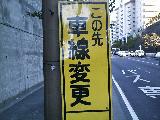 SHASEN HENKOU "must change lane" (due to construction, etc).
SHASEN HENKOU "must change lane" (due to construction, etc).
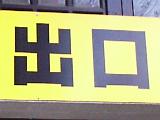 DEGUCHI (出口) exit; off-ramp
DEGUCHI (出口) exit; off-ramp
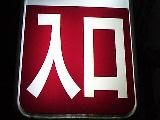 IRIGUCHI (入口) enterance; on-ramp
IRIGUCHI (入口) enterance; on-ramp
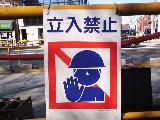 TACHIIRI KINSHI (立入禁止) "do not enter"
TACHIIRI KINSHI (立入禁止) "do not enter"
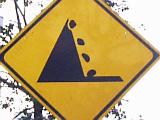 RAKUSEKI CHUUI (落石注意) "beware of falling rocks"
RAKUSEKI CHUUI (落石注意) "beware of falling rocks"
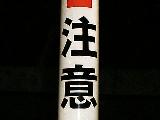 CHUUI (注意) "caution"
CHUUI (注意) "caution"
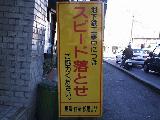 SUPEEDO OTOSE (スピード落せ) "slow down" (usually ignored)
SUPEEDO OTOSE (スピード落せ) "slow down" (usually ignored)
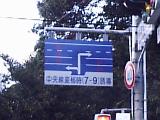 "Lane directions change during hours specified" -- During rush hour a 2 by 2 lane road may change to a 3 by 1 lane road to accomodate more traffic.
"Lane directions change during hours specified" -- During rush hour a 2 by 2 lane road may change to a 3 by 1 lane road to accomodate more traffic.
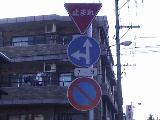 Often signs are put together.
Often signs are put together.
For a good collection of other Japan photos for living in Japan, trying visiting Rob's Japan Photo Gallery.
 Road mirrors
-- You'll often see mirrors like this along curving roads and blind intersections -- Use them! Many times they're the only
thing that keeps some maniac from plowing right into you.
Road mirrors
-- You'll often see mirrors like this along curving roads and blind intersections -- Use them! Many times they're the only
thing that keeps some maniac from plowing right into you.

Contributed by Warren Daniel: I recently asked a couple of police officers (in detail) about the situation regarding lines. According to what they told me, it is safe to cross all white-lines, however, it is prohibited from crossing any yellow-lines. One may *pass* inside of the lane marked with a yellow-line and as long as one does not cross the line, one will be fine. Here's the breakdown of what they gave me:
White lines/yellow lines:
1) Broken white-line -- go for it. Just use your turn signal and no one really cares.
2) Solid white-line --- go for it but use caution. The purpose of the solid, white-line is to highlight the fact that changing lanes is more dangerous but one may cross the line.
3) Solid yellow-line -- do not cross. Passing within the lane is okay and also cutting across the line due to double-parked cars is fine.
About solid yellow lines, Tetsuya Nishimura contributes:
It becomes Oikoshi Kinshi (追い越し禁止 - No Passing) only when accompanied by a no-passing sign. And the no-passing sign is the same as Oikoshi No Tame No Hamidashi Kinshi (追い越しの為のは食み 出す禁止 - No crossing of line when passing): a white sign with a red circle and slash with two arrows inside), which people generally believe no-passing, except a white, recangular supplimental sign underneath it saying Oikoshi Kinshi (no passing).
4) Solid, thick yellow-line -- DO NOT CROSS. They seemed to stress that one... It was almost as if crossing the thick, yellow line means "Go straight to jail, do not pass go." This also includes the thick yellow-line which contains a thick white-line.
Nirinsha (two-wheeled vehicle) zones:
1) white-line leading to the nirinsha zone -- may be crossed to reach the nirinsha zone.
2) yellow-line leading to the nirinsha zone -- may be crossed to reach the nirinsha zone *if* cars are not moving. If cars are moving, however, it is not to be crossed.
3) white-line that turns into a yellow-line leading to the nirinsha zone -- white part may be crossed at anytime however yellow area may only be crossed when cars are not in motion. Same as number 2 above.
4) confusing, what-the-hell-does-this-mean, speckled white-yellow-white-yellow-line -- I personally feel that it is an attempt at the sanity of motorcyclists by the police but from what I was told, if a line has any amount of yellow in it, treat it as if it is a yellow line. When I asked if it was permitted to wheelie down while avoiding the yellow areas, they just laughed. I have no idea why. ;-)
On the highway:
1) broken white-line (lane lines) -- Again, maybe crossed however turn, however, use of turn signal is needed. Tetsuya Nishimura also contributed: On major National Routes and Expressways, the distance from the beginning of a broken line to the beginning of the next broken line is usually 20 meters. It may not be the case in the city even if it's a major route.
------ ------ ------ ------
|<- 20m ->| |<- 20m ->|
2) solid white-line (lane lines) -- Okay to cross but use caution.
3) solid white-line (emergency lanes) -- These are not to be crossed unless stopping in the emergency lane. Although cagers enjoy barreling down the emergency lanes, especially during Golden Week and other times of major backups, you'll get stopped if they see you.
4) yellow-line (where incountered) -- Cannot cross although passing is allowed (???).
Other notes courtesy of Tetsuya Nishimura:
Two white diamonds lined up vertically Pedestrian crossing ahead
White inverted triangle Yield ahead
"60 Kou Chuu" ("60高中") 60km/h for high and mid speed vehicles
With this paint on the road, Chuusokusha (Mid-speed vehicle) that includes 125-250cc bikes can run at 60km/h, which exceeds the legal speed limit for the class on the ordinary street (50km/h) by 10km/h. 50 Kou Chuu and 40 Kou Chuu are more frequently seen. [Note: Wherever possible Japanese routinely exceed the speed limit anyway--patrol cars, comparitively speaking, are few and far between. Still, keeping Murphy's Law in mind...]

 A typical city street.
A typical city street.
Japan has a point system (you get "points" for various bad things, and various extra penalties kick in when the points reach certain limits). There are two levels of inebriation with respect to driving. One is plain and simple "drunk" (0.05% BAC, I believe). The other I translate as "tipsy", and is apparently a rather subjunctive observation of if you've been drinking or not.
In the following list of offenses and their respective point penalties, the second of a pair of numbers is the penalty if you're "tipsy" when you're nabbed. For example, riding w/o proper helmet is a 1 point violation unless the officer notices you've been drinking, at which it becomes a 7-point violation (and, as you'll see, a one-month suspension of your license).
| License suspensions in last 3 years | Points for 1 month suspension | Points for revocation of 1 year | 2 years | 3 years |
|---|---|---|---|---|
| none | 6-14 | 15-24 | 25-34 | 35+ |
| 1 | 4-9 | 10-19 | 20-29 | 30+ |
| 2+ | 2-4 | 5-14 | 15-24 | 25+ |
Points more than three years old disappear. Also, a one-year clean record (no accidents or tickets) clears all points. Note that speeding 30 km/h over the limit results in six points, which is a one-month license suspension. Ouch! [Believe me, I know]
If your license is suspended, you have the option of going to a class (one or two days long, depending upon number of points) to reduce the length of the suspension. At the end of the class, you take a test (they have an English test available) whose most difficult question is something like "true or false: you can drive as wild and rude and crazy as you like, so long as you don't hurt anyone" (answer: false). Depending upon how well you do on the test (I got all answers correct; took three minutes), they reduce your suspension to as little as one day (that one day being the day you take the class, so you can't drive to the test center).
(list as of July, 1991)
If case of accident, points to add if deemed you caused; and are:
| Completely Responsible | Somewhat Responsible | |
|---|---|---|
| Manslaughter | 13 pts. | 9 pts. |
| Major Injury | 9 pts. | 6 pts. |
| Light injury or property damage | 6 pts. | 4 pts. |
If you leave the scene of an accident, add 10 or 5 points based upon the circumstances.
Note that the above can be combined. For example, running a light while tipsy and causing a minor accident will result in at least 33 points and your license being revoked for two years. Each penalty has its own cash fine (a 30-50 km/h over the speed limit fine was 40,000 yen in 1993). ON TOP OF THAT, you'll have the following point-based license suspensions/revocations.

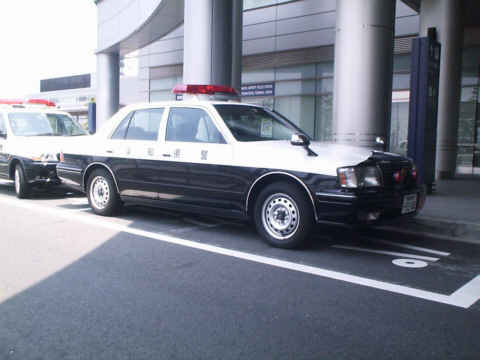
A cop car - best not to do something stupid with one of these behind you...
NOTE: This page contains Japanese script--if your computer's OS or browser is not set up to read it, many words will simply look like garbage. Try changing the way your browser reads the info - for example, using Firefox, click on "View", then "Character Encoding", then choose something like Japanese Shift_JIS.


Go on to Bike Purchases, Recommend Dealers and Stores
Go back to Driver's License Info
Go back to the The Table of Contents